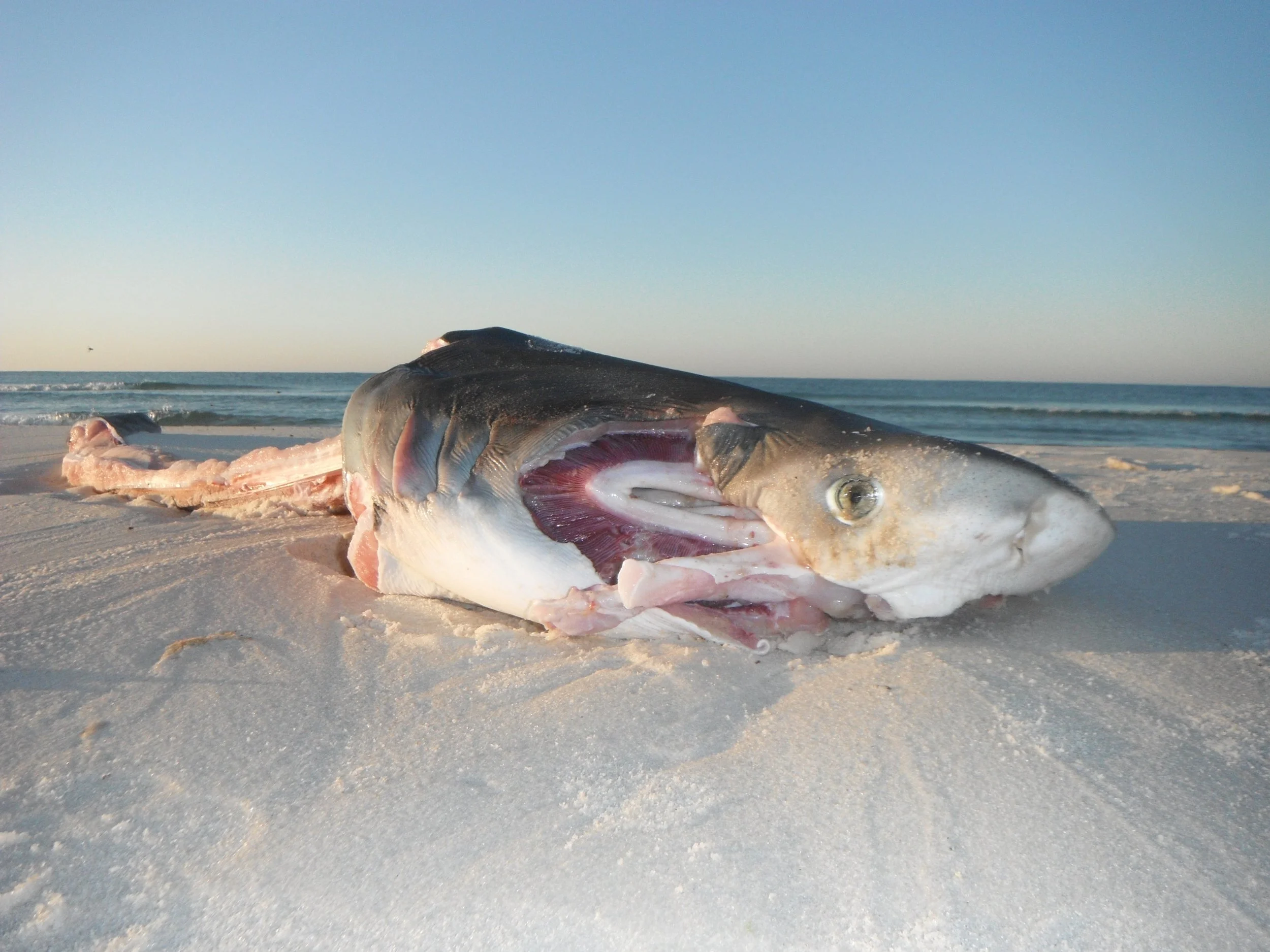100 million sharks are killed each year
Have you been hearing this statistic in the news and wondered where it came from?
Until now there had been rough estimates of the number of sharks killed each year, but no one had really worked the numbers.
In this study, “Global catches, exploitation rates, and rebuilding options for sharks”, nicknamed the "100 million sharks killed each year" paper, we did some serious number crunching.
How?
We used all the data we could get our hands on to estimate the global catch and mortality of sharks in the year 2000 and 2010.
We incorporated reported and unreported landings (what fishers caught and brought back to shore), discards (what fishers caught and threw back to sea), and shark finning practices (where fishers kept only the fins, and threw back the rest of the shark).
Summing across these, and considering survivorship of the sharks that are discarded (most don’t live), we found that approximately 1.44 million metric tons and 1.41 million tons were killed in 2000 and 2010, respectively.
Using the average weights of sharks by species, we translated these figures into annual mortality estimates, finding that around 100 million sharks were killed in 2000 and 97 million sharks in 2010 — given uncertainties in the datasets, the range is somewhere between 63 and 273 million sharks per year.
Further, to assess the sustainability of these rates, we examined the exploitation rate for sharks as a group. By comparing two independent mortality estimates with an estimate of total global biomass, the calculated exploitation rates ranged between 6.4% and 7.9% of sharks killed per year. This exceeds the average rebound rate (how quickly they can reproduce) for many shark species, further explaining the ongoing declines shark populations.
Who cares?
The consequences of our findings suggest that the impact of unsustainable catch and mortality rates would drive shark populations towards extinction, with impacts that extend across marine ecosystems. This highlights the necessity of a drastic reduction in global shark mortality to facilitate the rebuilding of depleted populations and the restoration of marine ecosystems with functional top predators.
So, what's the big takeaway?
The number of sharks that are killed each year needs to seriously be cut back.
This paper is a call to action, a wake-up call to protect sharks and their role in the ecosystem to keep our oceans healthy.
Outcomes?
The outcomes of this paper have played a pivotal role in driving positive changes and fostering proactive conservation efforts.
In response to the alarming statistics on shark mortality, there has been a notable increase in anti-finning policies. These measures aim to ensure that more sharks are landed intact, discouraging the cruel and unsustainable practice of shark finning. By implementing and reinforcing anti-finning policies, authorities and stakeholders work towards reducing the wasteful and detrimental impact on shark populations.
Additionally, the paper has influenced the establishment of Shark Sanctuaries and other area-based conservation measures. These initiatives create designated zones where sharks are safeguarded from overfishing and exploitation, providing crucial safe havens for their populations. Shark Sanctuaries serve as effective tools in preserving the biodiversity of marine ecosystems by maintaining healthy shark populations and contributing to overall ecological balance.
Moreover, the findings of the paper have contributed to the advocacy for CITES listings to prevent unsustainable international trade of threatened shark species. By placing certain shark species under the protection of the Convention on International Trade in Endangered Species of Wild Fauna and Flora (CITES), international regulations are implemented to curb the trade of these threatened species. Such listings serve as a mechanism to ensure that global commerce does not further endanger already vulnerable shark populations.
The outcomes of this paper have also catalyzed positive changes in shark conservation by promoting advocacy, education, and rallying to support the protection of sharks.
These efforts collectively contribute to a more sustainable and responsible approach to managing and preserving shark populations on a global scale, but more work is needed to make sure these efforts are working and having the intended effect.
















